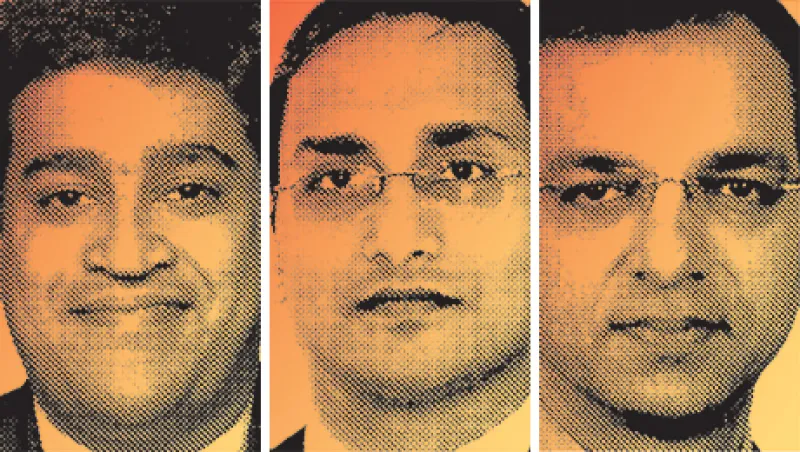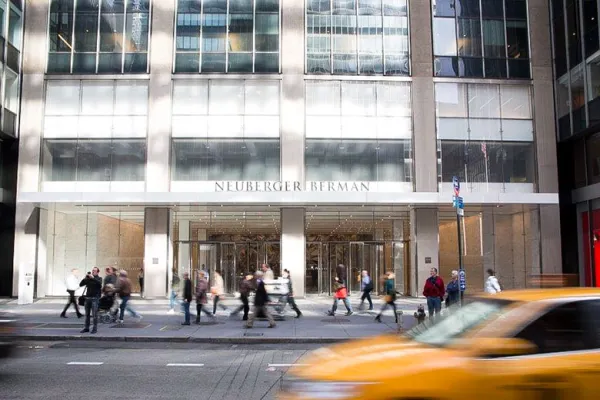For many years India was one of the most promising emerging markets. Real gross domestic product growth averaged more than 8 percent per year from 2003 through 2010, but by fiscal 2013 (which ran through March) the nation’s economic expansion had slowed to an annual rate of 5 percent — the lowest level in more than a decade.
It continues to falter. Just last month both the International Monetary Fund and the World Bank slashed their GDP forecasts for the current fiscal year, from 5.6 percent to 3.8 percent and from 6.1 percent to 4.7 percent, respectively. Those reductions didn’t sit well with the current government, especially with national elections only months away. Chakravarthi Rangarajan, chairman of Prime Minister Manmohan Singh’s economic advisory council, dismissed the institutions as “unduly pessimistic” and insisted that growth would meet or beat 5 percent this year.
However, with myriad problems besetting India’s economy, few market observers believe that much will change by the time polling begins in May. Inflation remains high — India’s wholesale price index rose 6.46 percent year-over-year in September, up from 6.1 percent in August and the fastest rate since February — as does the current-account deficit, which neared $88 billion, or a record 4.8 percent of GDP, in fiscal 2013. That was up from $78 billion, or 4.2 percent of GDP, in the previous fiscal year.
“Growth has been one concern that we think will continue into early 2014,” asserts Jyoti Jaipuria, head of India research at Bank of America Merrill Lynch in Mumbai. “The fiscal deficit will also be a concern. Over the next six months, however, the primary focus of investors will likely be the elections and what the nature and shape of the new government is.”
Singapore-based Chetan Ahya, Morgan Stanley’s economist for the Asia-Pacific region, points to other issues. “As policymakers focus on improving the macro indicators — such as inflation, the current-account deficit and the gap between loan growth and deposit growth — over the next six to 12 months, a meaningful recovery in private capital expenditures, government spending or private consumption will be difficult to achieve,” he says.
That’s not to suggest that investors necessarily should steer clear. Although the benchmark S&P BSE Sensex Index climbed only 5.8 percent year to date through mid-October, far below the 19.1 percent gain of the S&P 500, it nonetheless trumped the MSCI Emerging-Markets Index by some 7.4 percentage points. Opportunities abound for investors that know where to look.
Money managers often rely on the sell side for direction, and this year they say Bank of America Merrill Lynch provides the best guidance. The firm rockets from fourth place to first on the All-India Research Team, Institutional Investor’s annual ranking of the country’s best sell-side analysts, after picking up three spots, bringing its total to 11. That’s enough to push CLSA, which had been No. 1 for the past two years, down one notch to second place, even though it claims the same number of positions as last year, ten. Credit Suisse and Kotak Securities, which tied for sixth in 2012, jump in tandem to the third tier after picking up one spot each, bringing their totals to eight. Rounding out the top five is previously unranked Barclays, which captures six team positions. These results reflect the opinions of roughly 330 investment professionals at more than 200 buy-side institutions that collectively manage an estimated $100 billion in Indian equity assets.
Global investors began to flee emerging markets in May, after the U.S. Federal Reserve Board signaled that it might start to scale back its program of quantitative easing in September. India was among the hardest hit, owing to its high inflation and heavy reliance on foreign investment. By late August the rupee had plunged to a new low against the dollar, 68.85. The Fed’s decision to postpone action until it sees more signs of sustainable economic growth in the U.S. was welcome news to the world’s largest democracy.
“Receding concerns over QE tapering have helped to revive capital inflows into India,” reports Morgan Stanley’s Ahya, the highest-ranked economist for a third year running. “These developments have helped to stabilize the currency and allowed the Reserve Bank of India to remove the monetary-tightening measures in a calibrated manner to support growth, which remains weak. However, these reduced pressures on the currency may mean the government’s efforts to implement policy reforms may slow.”
For example, early last month the central bank lowered the marginal standing facility rate it had raised in mid-July to slow the plummeting rupee, but “the reversal in monetary measures by the RBI has meant that short-term real rates are back in negative territory, delaying the adjustment required to address the domestic liquidity imbalance,” he explains. “We believe persistent negative real rates on [consumer price index] inflation since the credit crisis have been one of the key factors increasing macro stability risks in India.”
Ahya is more upbeat than the IMF, forecasting real GDP growth of 4.1 percent in the current fiscal year and 5 percent in fiscal 2015. “We expect export-related sectors to do well, but growth in domestic demand-related sectors will remain constrained for a while longer,” he predicts. “The outcome of the general elections could be a big positive trigger for business as well as consumer confidence.”
In the meantime, “the economic and political environment in India is still uncertain,” observes Aashish Agarwal, who directs India research at CLSA in Mumbai and also leads the lineup in Financials for a third year. “We recommend that investors stick with quality stocks and be prepared for volatility.”
The Fed’s decision was especially beneficial to India’s bankers. “As the market recalibrated to delayed withdrawal of QE, Indian banks have outperformed, reflecting that concerns of tighter monetary policy to defend the currency have eased,” Agarwal explains.
For the first time in a decade, the sector is poised to expand as a result of regulatory changes. The RBI is set to grant banking licenses to companies that meet the stringent criteria it outlined earlier this year. Seemingly unlikely contenders include outfits whose operations are far afield from banking, including Aditya Birla Group, a conglomerate with interests in agribusiness, chemicals, and metals and mining; Larsen & Toubro, the nation’s largest construction and engineering concern; and Tata Group, whose subsidiaries include automakers, consumer goods manufacturers, information technology providers and retailers.
“More than 20 groups have applied, and we understand that about five new licenses may be awarded,” says Agarwal. “Entry of new banks can lead to price-based competition for deposits, loans and talent. Smaller banks may face higher pressure, so it can also increase the possibility of acquisitions of the smaller private banks.”
Not all firms are created equal, he adds, and investors should be mindful of the differences between private operations and public sector undertakings. “Private banks in India are more profitable, less leveraged and have less exposure to riskier sectors than the PSU incumbents,” he says. “Therefore we expect private banks to provide better longer-term returns to shareholders.”
Credit Suisse’s Amish Shah, consistently No. 1 in the Power sector, holds an inverse view with regard to his companies. “We advise avoiding most private sector power developers, owing to their mispriced power purchase agreements and high leverage,” he says. “Government-owned utilities such as NTPC should do well, as we expect fuel supplies for its projects to improve. This should lead to a rebound in its earnings growth and return ratios, and therefore its stock performance.”
Even so, the Mumbai-based analyst has a negative view on the sector, which he says is in dire need of overhaul. India has one of the world’s fastest-growing energy markets, with demand far outpacing supply and forcing the country to rely heavily on coal and oil imports rather than developing its own resources.
“The domestic fuel deficit is the key issue impacting the power companies,” Shah maintains. Resolving the problem would alleviate such related issues as financially weak state electricity boards and incorrectly valued power purchase agreements, but “this would require structural reforms and is thus unlikely to get resolved in the near term,” he says. “The government’s response is very poor so far.”
Nor are recent liquidity gains providing a lift. “The power sector has been among the least beneficiaries of curtailment in tapering and increasing [foreign institutional investor (FII)] equity flows to India,” Shah observes. “The sector, in general, has underperformed the market since September; however, some stocks with highly geared balance sheets have witnessed a 14 to 25 percent rally in hopes of their ability to raise funds through asset sales. Muted performance, despite easing liquidity, reinforces our view that the sector will not rally unless the issues are resolved.”
Capital goods companies have also been underperforming. “There is a very sharp decline in industrial and infrastructure investments in India, driven by clearance hurdles, policy issues, weak demand outlook and high cost of capital,” explains Kotak’s Lokesh Garg, now in his third year as sector champ. “The government is trying to take steps to alleviate the situation, but we do not find them adequate and believe that significant pickup in the investment cycle — particularly private sector investment — will take time.”
Although the domestic market may be disappointing, the weak rupee is boosting capital goods exports, particularly to Africa, the Commonwealth of Independent States, the Middle East and Southeast Asia. That trend is likely to continue, Garg believes, regardless of whether the Fed curtails its bond-purchase program. “Demand in these countries is independent of that event,” contends the Mumbai-based analyst. “QE tapering can actually make Indian manufacturing even more attractive on currency.” He is urging clients to focus on diversified companies that maintain a presence across multiple subsectors as well as those with substantial nondomestic business interests.
Garg’s colleague Sanjeev Prasad, who jumps from third place to first in Portfolio Strategy (and also captures a runner-up position in Oil & Gas), believes that policymakers must do more. “Governance, fiscal discipline and investment — in that order — are important to put India back on a path of higher growth,” he says. The three components are interconnected, he adds. “Governance reforms will lead to better management of the economy, and smoother government-business interface will lead to a better investment climate — which in turn will lead to more investment,” says Prasad, who is also Kotak’s head of institutional equities. In addition, “an improved fiscal position arising from taxation and subsidy reforms will lead to more manageable fiscal deficits and help bring down the cost of capital in the economy,” he says. “This will also spur investment eventually, if other factors of production are also addressed.”
In this regard, the Fed’s decision not to taper is something of a mixed blessing. “India has some breathing space to get its house in order and put in place much-needed structural reforms, starting with fiscal reforms,” the Mumbai-based strategist says. “However, some of the pending reforms in areas of input markets — labor, capital — and output markets — pricing of certain regulated products, lower bureaucracy — have been put on hold for the time being.”
Agarwal concurs. “The delay has given more time for the policymakers and more space to implement reforms in a more gradual manner,” the CLSA analyst notes. “This is good, as calibrated changes are better than sudden shocks. However, it remains to be seen how the Indian policymakers respond.”
Three sets of broad reforms are required to address “fiscal profligacy, currency issues and the investment slowdown,” he adds. The government has already taken steps toward resolving each of these concerns. In January it introduced the direct benefit transfer program through which subsidies are awarded directly to people living below the poverty line, rather than to state governments for distribution. “The subsidy burden needs to be gradually reduced, and the direct benefit transfer is a great way to effect same,” believes Agarwal. To deter people from investing in gold rather than cash, “credible inflation hedge investment products such as CPI-linked bonds should be made available,” he adds. “To revive the investment cycle, the red tape of approvals needs to be eased.” The Competition Commission of India, a consumer protection and fair trade regulator that has been in operation since 2009, “is a step in the right direction,” he says.
BofA Merrill’s Jaipuria, a runner-up in Portfolio Strategy, is optimistic that more improvements are on the way. “We expect the government to use this period to reduce India’s vulnerability when tapering finally happens,” he says, citing several likely changes: “Faster clearance of projects — the formation of the CCI is a move in that direction; attracting foreign direct investment, including increasing FDI in insurance and retail; reducing inflation by better logistics so that rates can be lowered; and passing the Goods and Services Tax bill.” A revised version of the latter, a value-added tax, was distributed to the states in late September and is scheduled to be debated by their finance ministers this month.
Elected officials have plenty of room to maneuver, insists Ashish Gupta, head of Indian equity research at Credit Suisse in Mumbai (and the No. 2 analyst in the Financials sector). But that doesn’t mean they will act.
“While most discussions on reforms are centered [on] either some key legislative bills or administrative decisions, we believe there are a number of other reforms that could have a meaningful impact,” he says, citing not only the GST act but also initiatives intended to open India’s bond markets, privatize its railways and expedite resolution of commercial court cases. “While there is much enthusiasm whenever a new reform gets announced, our research on the history of reforms in India suggests that there is a considerable lag of six to eight years between the time a reform gets enacted and the time its benefits start trickling into the economy.”
Although India’s situation is unlikely to improve anytime soon, Gupta adds, it probably won’t get any worse. “Much of the pain emanating from the Fed’s announcement of a potential taper has already been reflected in debt outflows,” he points out. “FII equity inflows have held up.”
To view the full list of winning firms on this year’s All-India Research Team, click on the Leaders link in the navigation table to the right.
To view the winning analysts in each sector, click on the Best Analysts of the Year. Information about analysts in second and third place, as well as runners-up, is available to subscribers only.
For information about how we compiled this ranking, click on Methodology.






